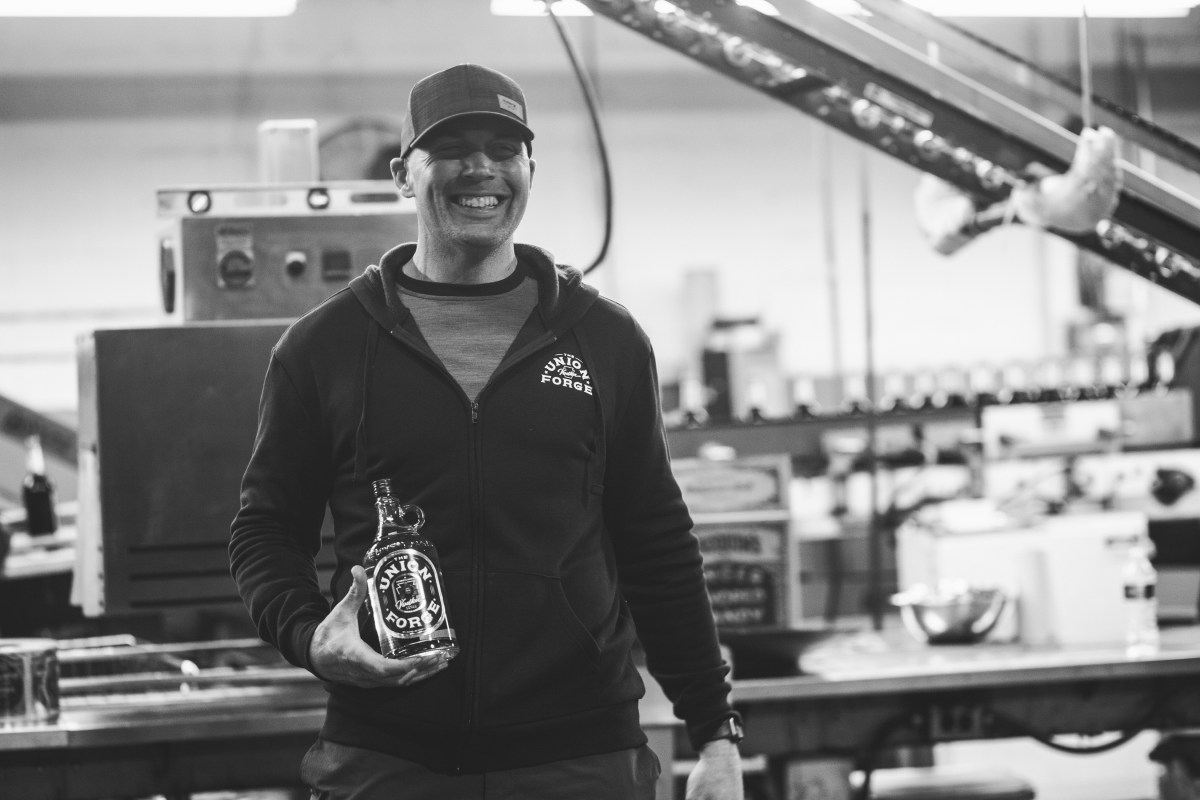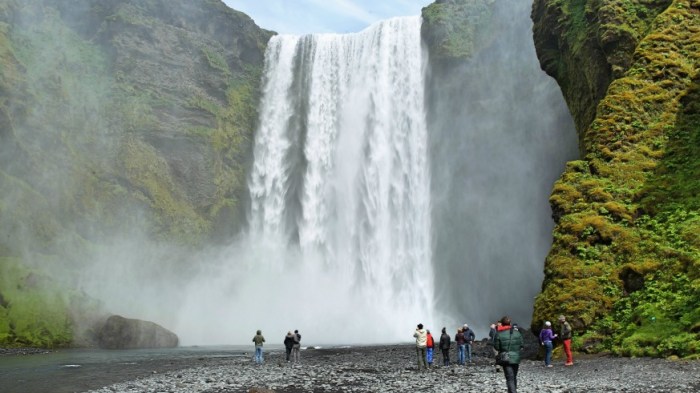Although it seems to still take a special breed of person to sign up for a Polar Plunge challenge, cold therapy minus the water is more popular than ever. Also known as cryotherapy, it’s become a trendy treatment offered at a growing number of New York gyms and spas. But are you sure what you’re paying for is real cryo? It all comes down to the cryotherapy chambers: the right full body cold treatment offers many health benefits, but wrong equipment just leaves you standing in the cold.
Metro sat down with Mila Jouravleva, the founder and owner of New York City-based “anti-spa” The Fuel Stop (“anti” because, unlike typical spas, you’ll spend literally just minutes getting your rejuvenation here), to talk about the benefits of true cryotherapy and common misconceptions about the treatment.
Wait, what is cryotherapy?
There are medical types of cryotherapy treatment that have been in use since long before the spa session went mainstream. Most commonly it’s used to treat warts and to destroy irregular or cancerous cells on the skin or cervix. The cryotherapy that you sign up for as an elective treatment has the same foundation, but there’s a very big difference: the amount of area being treated.
Simply put, cryotherapy is a treatment in which you subject yourself, barely clothed, to temperatures lower than -200 degrees F. Although chambers differ, and this means more or less of your body can be exposed to the treatment depending on where you go, most sessions are within the tight window of 2 to 4 minutes.
There are different types of cryotherapy chambers
Mila affectionately calls the cryotherapy chamber at The Fuel Stop the “Rolls Royce of cryo.” Most people, even those actively seeking out the treatment, don’t know that not only are there different styles of chambers but also that these differences can make or break the benefits you get from your session. She didn’t know at first either.

Figures depict body temperature differences before and during cryotherapy for partial-body cryo (top) and whole-body cryo (bottom), like The Fuel Stop offers. Photo: Provided by The Fuel Stop
A passion for the treatment lead her down the path of researching cryotherapy chambers for herself. The traditional chamber, one that you’ll see at many spas and gyms in New York, keeps the patient’s head out of the cold since they’re fueled with nitrogen. Since we can’t breathe nitrogen, and each session lasts 2 to 4 minutes, you need to keep your head out. Aside from the safety concerns about nitrogen, Jouravleva questioned the process. Most of her body was left feeling only semi-cold since it was exposed to room-temperature air. She wondered if this meant she was getting the health benefits at all.
Cryotherapy at The Fuel Stop is different
She began to research. After diving into the science and flying around the world visiting different types of cryotherapy chambers, she found the one she finally brought back to the U.S. The cryo chamber you’ll find at The Fuel Stop is custom made for the space, but she found the style in Germany. It uses natural air, not nitrogen, to create the extreme cold. That means they’ll send you in to be fully submerged in the cryotherapy chamber, and in just your skivvies.
After encouraging you to pick an upbeat song that will play while you endure the cold, the knowledgeable technicians send you in for your 3 minutes in -230 degrees F. (I resisted the urge to have “Ice, Ice Baby” playing during my session and go with “Midnight City” instead.) Yes, you can move around a little bit to, say, dance to distract yourself, they’ll tell you. Even if you’re self-conscious, you’ll dance. Not because the music is somehow better in the frigid air but because your body starts moving to try to stay warm anyway. Might as well move to a beat.
When you’re done, you’re draped with a robe and ushered into another room. They speed up the circulation of blood back into your extremities with a PowerPlate machine, then you’re left to relax with a warm cup of tea. But what you’ll really be doing is basking in a delicious post-cold glow.

What my cryotherapy session at The Fuel Stop was like
You already know I half-swayed, half-danced to M83’s “Midnight City.” What you don’t know is I was expecting to feel horrible for 3 minutes. No pain, no gain, right? The time passed relatively quickly, although I could have tracked it by listening more closely to the music. I was expecting to shake uncontrollably the whole time, but that didn’t happen. In fact, I didn’t shake much at all. (Although I couldn’t get my arms to unfold from an unfortunate T-rex-like position during my time in the tank.)
I was more self-conscious about the fact that the technician could see me awkwardly swaying to music in my underwear than I was aware of the cold. Nothing went numb, though you do have thick gloves, a headband and wool socks on when you’re in the chamber. I emerged a rosy pink color from the cold, completely unprepared for what followed.
When I arrived at The Fuel Stop, I had a blossoming migraine sitting over one eye. It had disappeared. My legs had been aching from the leg workout I did the night before. My sore muscles were eased and the visible inflammation I was suffering from had deflated. I felt safe and comforted, emotions I associate more with fleece blankets than the cold. But, more strangely, I felt benevolent. You might laugh. It does sound weird. Three minutes was all it took to completely reverse my mood.
Breaking down the Cryotherapy benefits
Cryotherapy benefits span a wide range. It’s been claimed that cold therapy can help with everything from chronic pain to depression, that it can boost collagen production and give your metabolism a rev. While some of these claims have been proven, most studies are about much less intense therapies, such as wearing cold gloves for 90 minutes for chemo-induced neuropathy.
Most the evidence seems to be experiential. Jouravleva hops in the tank every single day. Her customers swear by the quick treatment, claiming it has eased their depression, helped them sleep and lifted some pain associated with arthritis. She even has athletes come for a marathon session: they’ll hop in the tank, recover for 15 minutes, and repeat the process one or two more times.

When I got the chance to sit down and talk with Jouravleva about her “anti-spa” and this unique cryotherapy chamber, this feeling was the first thing on my mind. I asked her to explain to me how I could feel so good after just a 3 minute dip in the cold, and why she claims this experience is unique to whole body cryotherapy. It all comes down to the vagus nerve, she explained.
Activation of the vagus nerve can lower your stress levels by lessening the “flight or fight” response. But although the nerve system associated with the vagus nerve runs throughout your body, the primary nerve is at the back of your head. No full immersion chamber, no freezing of your vagus nerve, and that means fewer benefits.
Jouravleva also describes how the different chambers can make your break your circulatory benefits. When you drop your body into a -235 degree F chamber, it quickly shuts down the circulation to your extremities and shuttles the blood to your core to protect your organs. With the other chambers that allow some leak in of room-temperature air, that doesn’t happen. And you want it to, since it’s this process that can ease arthritis and quell inflammation. In a “bucket” chamber, the body will fight to keep your arms and legs warm, and this shuttling of blood doesn’t happen in the same way or as drastically.
That’s why I didn’t shake in the chamber. And this is what Jouravleva means when she says there’s a difference between cryotherapy and just feeling really cold. I would do this treatment again. I would not, however, sign up to shiver for 3 minutes straight.
Want to book a session?
You’ll need to call The Fuel Stop to make an appointment if you want to jump in their cryotherapy tank. A single session will cost you $75 (about what you’ll pay for a single session in those other cryotherapy chambers), but Jouravleva offers discounted bundles as well as popular treatment combinations to help you save money. Check out their offerings at thefuelstop.com or call them at (212) 235-1066.























